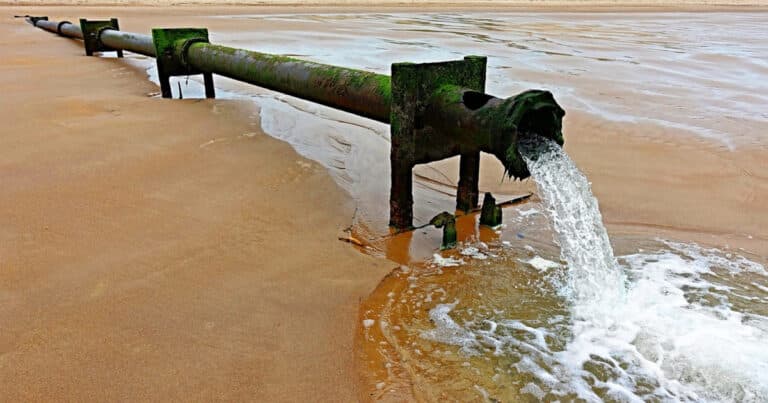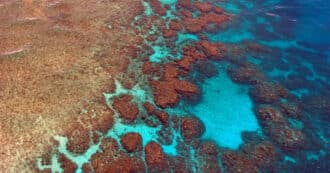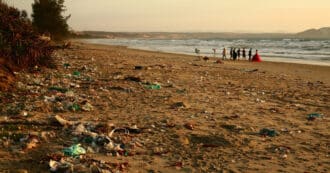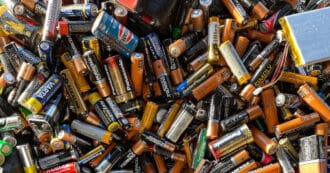What Is Sewage Water?
By Harry Cooper – Sewage, or wastewater, is water that has been used in factories, homes, or other buildings and contains pollutants because of it. The pollutants found in sewage water have detrimental impacts on human health and the environment.
Types of Wastewater
Industrial Wastewater
Almost all industries require water at some point in production, and in almost every industrial system water becomes contaminated with various pollutants. Since there are many different kinds of manufacturing processes, the specifics of the pollution that’s caused from improper sewage disposal can vary greatly.
Depending on what is being made and the process it involves, the type of waste that comes from industrial processes can change. These can range anywhere from ammonia as a byproduct of iron production to oil fracking bringing toxic substances from underground to the surface.
Nutrient Pollution
The most notable example of industrial sewage is that which cohttps://doee.dc.gov/sites/default/files/dc/sites/ddoe/publication/attachments/Building%2C%20Stormwater%20P2.pdfmes from agriculture and other industries that contaminate their wastewater with nitrogen and phosphorus. These chemicals are important because they contribute to a very unique kind of pollution known as eutrophication or nutrient pollution.
Nitrogen and phosphorous are the key ingredients in most industrial fertilizers, and therefore when they manage to get into water bodies through sewage they actually act as a surplus of nutrients for algae. This allows for large growths of algae called algal blooms that can greatly offset aquatic ecosystems.
At first the algae produces excessive amounts of oxygen, but after the blooms inevitably die, microorganisms use up all the oxygen during decomposition. This creates an aquatic environment completely deprived of oxygen called a dead zone, where little to nothing can live.
Storm-water
Whenever it rains, the water on the ground picks up chemicals and other substances as it starts to flow towards water bodies and storm drains. When rain becomes polluted with these chemicals on the ground it becomes a type of wastewater called storm-water runoff.
Storm-water normally soaks into the the ground and is absorbed by plants. However, in urban areas there is not as much dirt or plants to absorb all the water, and thus storm-water is able to pollute nearby water bodies.
The types of pollutants that can be picked up by storm-water come from a variety of sources and therefore can have a lot of negative effects on local water systems. These pollutants can include pet waste, fertilizer, pesticide, oil, and pretty much any chemical you could expect to find on the ground in an urban environment.
Storm-water has also been particularly topical in recent weeks, as Western Canada has been experiencing torrential rain and flooding. This has caused several landslides across the region.
Not only are these landslides capable of destroying houses and other buildings, but they also dump massive amounts of sediment into nearby water bodies destroying marine habitats.
Domestic Sewage Water
Domestic sewage consists of all the water we use in our home. This type of sewage can be divided into two groups, the sewage that comes from our toilets (blackwater), and the water that comes from the kitchen, bathing, and washing clothes (greywater).
Domestic sewage contains both inorganic chemicals and organic material. About 30% of domestic sewage is inorganic material, while the other 70% is organic matter that can spread bacteria and other pathogens.
Greywater Sewage
Greywater includes all domestic wastewater without human waste. Greywater therefore contains high amounts of chemicals from washing clothes, showering, and general cleaning.
The chemicals that greywater contains can be very toxic and harmful to aquatic environments. Some of these substances also include nitrogen and phosphorus which can lead to nutrient pollution as we’ve seen in many other types of wastewater.
Blackwater Sewage
Blackwater includes all domestic sewage that comes from our toilets. Most of the pollutants found in blackwater are forms of organic matter found in human waste such as bacteria and other microscopic organisms.
Blackwater can have a heavy cost on human health when left untreated. Because blackwater contains lots of organic materials it also contains a wide array of viruses, parasites, bacteria, and other pathogens that can spread infections and other diseases.
Sewage Treatment
Wastewater treatment plants can be divided into two main kinds: industrial treatment and domestic treatment. The main difference between domestic and industrial treatment plants is industrial treatment is done on site while domestic treatment plants treat sewage from a surrounding area.
While these types of wastewater treatment plant serve to treat different types of sewage, the process of treatment is very similar at any given treatment plant. The only difference is that industrial treatment is more focused on removing chemicals, while the domestic process is more inclined to remove organic matter.
Sewage Treatment Process
There are three stages in wastewater treatment, the first stage is called primary primary treatment. Primary treatment starts by filtering out larger contaminants. This allows them to get rid of most suspended solids in the sewage.
The second stage is called secondary treatment, in which the wastewater is further treated and purified. This can be done in several ways. One such way is through a more intense filtration that involves sand filters and contact filters. Another way is done by exposing the sewage to microorganisms and activated sludge that naturally filters the wastewater over time.
The third step, or tertiary treatment, is mainly focused on removing any remaining phosphates or nitrates that could cause nutrient pollution. This is done mainly through filtration through carbon and sand.
Religion and Sewage Water
Native Americans and other ecological activists have been involved in a prolonged struggle to protect one of their sacred mountains in Arizona. The mountain is used as a ski resort, and to ensure there is enough snow for skiing, treated wastewater has been brought in as snow. Native American groups like the Hopi tribe view this as a desecration of their sacred mountain and are concerned about the spiritual and ecological implications of dumping sewage water on their mountain.
Sewage water is also an issue at other holy sites like the Jordan River, which is considered a place of miracles for Jews and Christians as it was miraculously split by the ancient Israelites and it was the place of Jesus’ baptism. According to EcoPeace Israeli director Gidon Bromberg, “The water quality is anything but holy in nature.” Nader Khateeb, the Palestinian director of EcoPeace adds “The water at the baptism site is unhealthy… It has so many potential health risks. We believe that the people who want to be baptized in that part of the river should be baptized in fresh healthy water.”
Protecting our water resources from raw sewage and other effluents should be a top priority for every religious person, especially when that water was a place of miracles. Though in truth, one who understands the rarity of life in the universe and life’s dependence on clean water, recognizes that all water is miraculous.
* Featured image source








